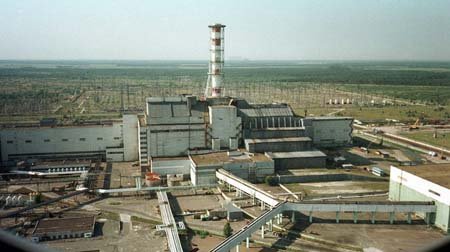
On April 26, 1986, the world witnessed one of the most catastrophic nuclear disasters in history at the Chernobyl nuclear plant, located near the city of Pripyat, Ukraine.
The Chernobyl accident, classified as level 7 on the International Nuclear and Radiological Event Scale (INES), left deep scars on the earth and global consciousness.
The causes of this complex and tragic disaster can be broken down into several crucial factors.
Faulty reactor design
One of the key factors contributing to the Chernobyl disaster was the inherently unstable design of the RBMK-1000 reactor used at the plant.
These reactors, unlike Western designs, were graphite-moderated and water-cooled, making them prone to an uncontrolled chain reaction when not handled properly. At low powers, they were especially dangerous, as the cooling was weakened, which could trigger an uncontrolled rise in temperature.
Additionally, this type of reactor had a dangerous feature: the positive vacuum coefficient, meaning that as the power was reduced, the reactivity of the reactor increased, exacerbating the risk of a nuclear disaster.
Crucial human errors
 During a scheduled safety test at Chernobyl, plant personnel made crucial mistakes.
During a scheduled safety test at Chernobyl, plant personnel made crucial mistakes.
They removed an excessive number of control rods from the reactor to reduce power, without following proper safety guidelines. Poor communication and lack of proper training led to a series of poor decisions. Furthermore, the lack of clear and effective security procedures contributed to the confusion and poor handling of the situation.
The lack of understanding about the intrinsic characteristics of the reactor and the lack of experience in managing critical situations further aggravated the tragedy. Plant operators were not adequately prepared to deal with the complicated dynamics of an RBMK-1000 reactor in a runaway situation.
The challenge of keeping the reactor running while safety testing was carried out without triggering an uncontrolled chain reaction proved to be a deadly balancing act.
Culture of secrecy and lack of transparency
The Soviet Union had a culture of secrecy surrounding its nuclear facilities and a lack of transparency in information related to nuclear safety. This limited the ability to learn from previous accidents and share valuable information.
The lack of an independent regulatory body also contributed to the lack of proper oversight and control of the Chernobyl plant. Safety issues that had previously been observed at other RBMK reactors were not adequately communicated or effectively addressed.
Secrecy and lack of transparency were also evident in the initial response to the accident. Soviet authorities did not immediately disclose the severity of the incident, and as a result, many people in areas near the affected reactor did not take necessary precautions to protect themselves from radiation.
This lack of adequate communication further increased the scope of the disaster and its impact on public health.
The result: an explosion and massive release of radiation
 These factors converged on the fateful night of April 25-26, 1986, when reactor number 4 at Chernobyl experienced an uncontrolled power surge and ultimately exploded.
These factors converged on the fateful night of April 25-26, 1986, when reactor number 4 at Chernobyl experienced an uncontrolled power surge and ultimately exploded.
This explosion released an immense amount of radioactive particles into the atmosphere, seriously affecting the local population and causing the evacuation of thousands of people. Radioactive dust rose in a deadly cloud that spread across Europe, contaminating vast areas and causing concern and alarm across the continent.
Summary and conclusion
In short, the Chernobyl accident was due to a combination of faulty reactor design, crucial human error, lack of proper training and procedures, and a culture of secrecy and lack of transparency.
This nuclear disaster serves as a grim reminder of the importance of nuclear safety, effective communication and independent oversight in the management of nuclear facilities.
Its consequences, both in terms of human lives and the environment, endure as a warning to future generations about the dangers inherent in poorly managed nuclear energy.